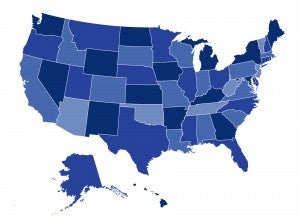
By Sarah Dash and Amy Thomas
The options for states to take part in the Affordable Care Act’s health insurance marketplaces have evolved over time. While the law initially contemplated only two models—state-based or federal marketplaces—political and practical circumstances ultimately led to the creation of multiple avenues through which states could establish marketplaces in 2014 and take on responsibilities for running various marketplace functions.
The U.S. Department of Health and Human Services (HHS) recently released the 2015 marketplace models for states. Moving forward, states may continue to move between different marketplace models. In doing so, they will consider a number of factors, including the likelihood of obtaining legal authority to run a state-based marketplace, funding availability, desire to maximize state regulatory oversight, and their technological capabilities. To transition from a federally run to a state-based or state-partnership marketplace, states must meet key deadlines this spring and establishment grants cannot be awarded after January 1, 2015. Conversely, states choosing to relinquish marketplace operation to the federal government must notify HHS at least 12 months in advance.
In their latest blog post for the Commonwealth Fund, Sarah Dash and Amy Thomas dig into which states are transitioning to state-based marketplaces – and which states are looking at alternative models, from SHOP-only to potential regional marketplaces. Read about their findings here.

